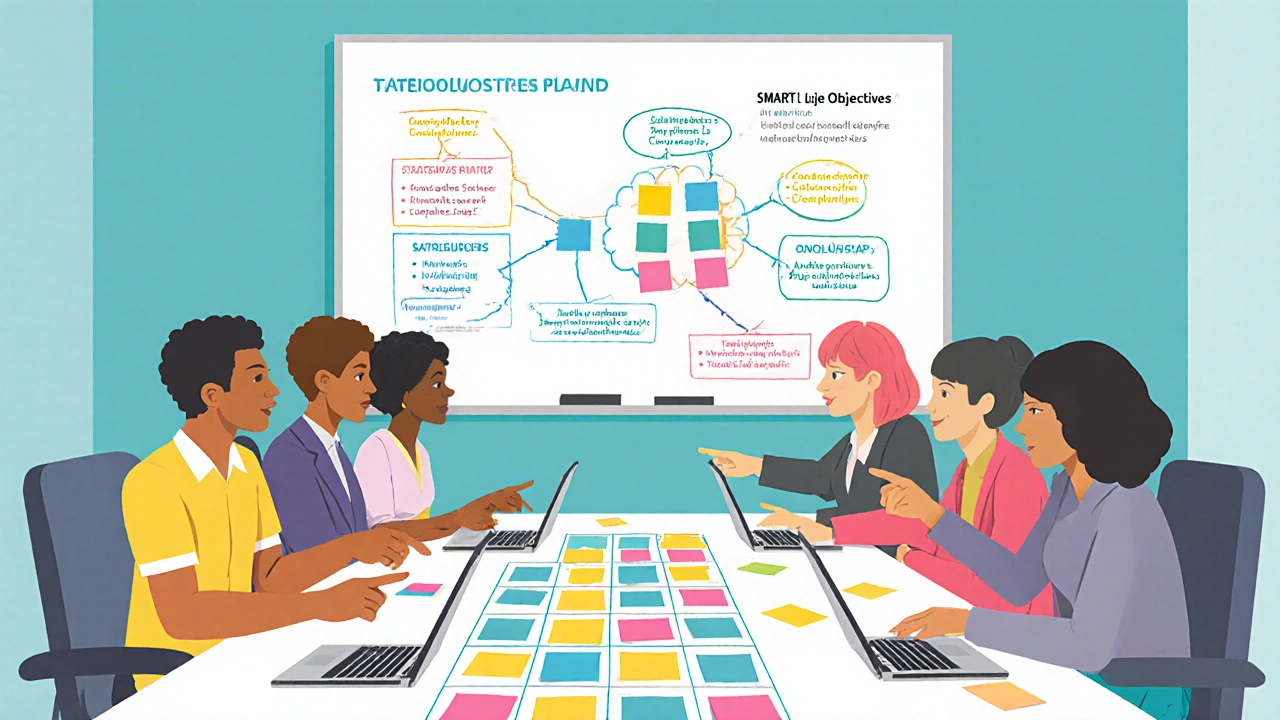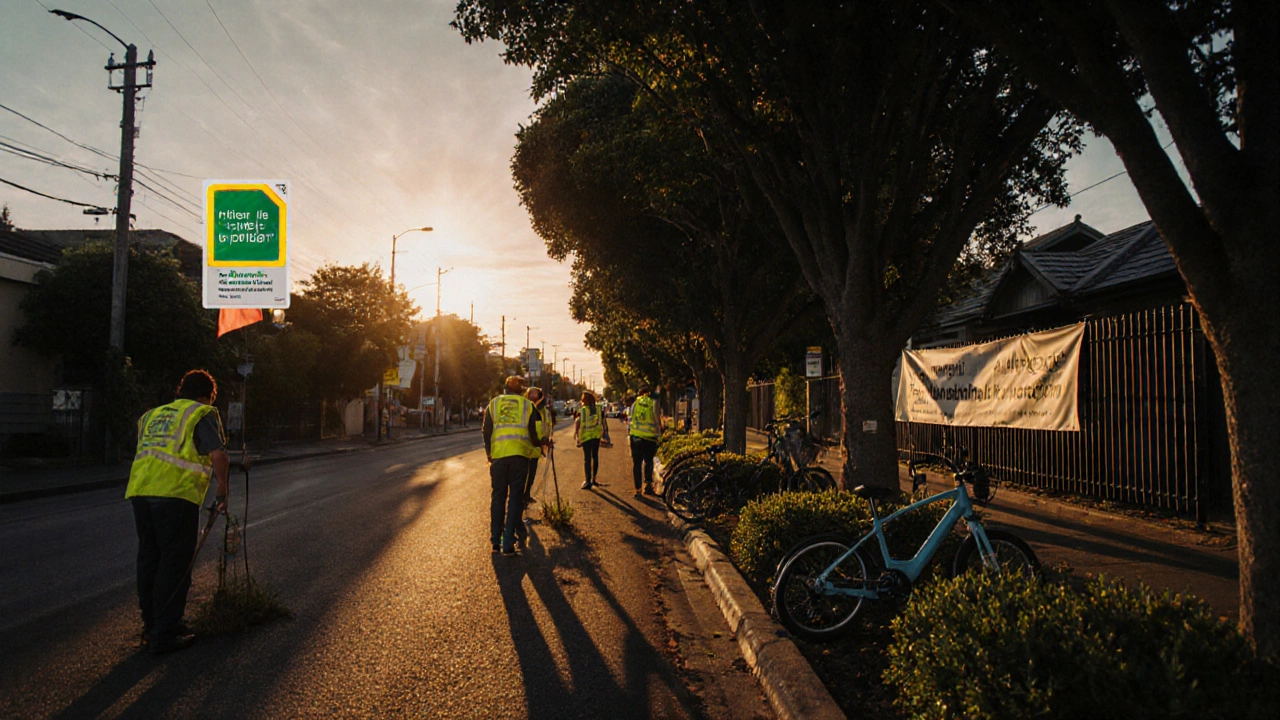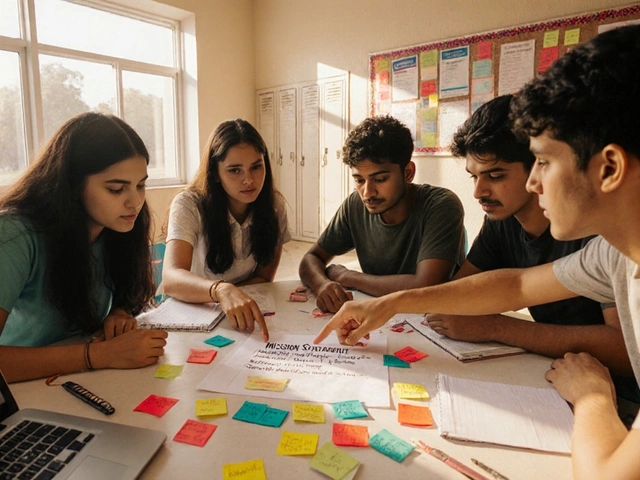Community Outreach Impact Calculator
Calculate Your Outreach Impact
Determine realistic goals and expected outcomes for your community outreach program using the SMART framework.
Your Outreach Details
Results & Recommendations
When a group wants to make a real difference, Community outreach is the organized effort to connect with local residents, understand their needs, and deliver resources or information in a way that builds trust and lasting relationships. It’s not just handing out flyers or posting on social media; it’s a thoughtful, repeatable system that shows up where people live, work, and play. Below you’ll find the exact ingredients that turn a one‑off event into a sustainable, positive impact.
Defining a Successful Outreach Program
A successful program starts with a clear definition of its purpose. Ask yourself: What change are we trying to create? Whether it’s improving mental‑health awareness, increasing school‑age children’s after‑school activity participation, or reducing food waste, the goal must be specific, measurable, and relevant to the community you serve.
Core Components of Effective Outreach
Four pillars hold up any good outreach effort:
- Stakeholder engagement. Stakeholder engagement means identifying and collaborating with individuals or groups who have a vested interest in the project’s outcomes. This includes local councils, schools, faith groups, and even businesses that share the same audience.
- Outreach strategy. A solid plan outlines who you’ll reach, how, and when. Outreach strategy is a roadmap that matches community needs with appropriate communication channels and activities.
- Volunteer network. People who care about the cause amplify your reach. Volunteer network refers to the group of community members who donate time, skills, and personal connections to help deliver the program.
- Impact measurement. Without data, you can’t prove success or learn from mistakes. Impact measurement involves tracking key metrics that reflect whether the outreach goals are being met.
Step‑by‑Step Planning Process
- Conduct a community needs assessment. Community needs assessment gathers quantitative and qualitative data about the issues, resources, and preferences of the target population. Surveys, focus groups, and public data sets are common tools.
- Define clear objectives. Use the SMART framework (Specific, Measurable, Achievable, Relevant, Time‑bound) to turn broad goals into concrete targets.
- Map out a stakeholder matrix. List each stakeholder, their interests, and the level of involvement you need. This matrix clarifies who you’ll co‑design with and who can help amplify the message.
- Select appropriate outreach channels. Consider a mix of digital and physical touchpoints. The table below compares the most common options.
- Build a volunteer recruitment plan. Offer clear role descriptions, training sessions, and recognition mechanisms to keep volunteers motivated.
- Develop an outreach evaluation framework. Outreach evaluation framework outlines the indicators, data sources, and frequency of measurement for every objective.
- Launch a pilot, collect feedback, and iterate. Small‑scale tests reveal gaps before you invest heavily.

Choosing the Right Channels - A Quick Comparison
| Channel | Typical Reach | Cost | Interaction Depth |
|---|---|---|---|
| In‑person events (workshops, stalls) | High within a local radius | Medium‑high (venue, materials) | Very high - face‑to‑face dialogue |
| Digital platforms (social media, email) | Very high - can be regional or national | Low‑medium (ad spend, design) | Medium - depends on content quality |
| Local partnerships (schools, businesses) | Moderate - reaches specific audiences | Low (shared resources) | High - partners endorse and co‑deliver |
Each channel has its own sweet spot. Community outreach works best when you blend at least two of them, ensuring both breadth and depth.
Measuring Success and Proving Impact
Data collection starts before you launch. Typical metrics include:
- Number of individuals reached (attendance, impressions)
- Engagement rate (questions asked, sign‑ups, volunteer hours)
- Behavior change indicators (e.g., increase in recycling rates, attendance at follow‑up workshops)
- Stakeholder satisfaction scores (via post‑event surveys)
Use a simple spreadsheet or a dedicated Digital platforms software such as Google Data Studio, Tableau, or open‑source alternatives that visualise outreach data in real time to track progress. Quarterly reviews let you adjust tactics before the next cycle.

Common Pitfalls and Pro Tips
Even well‑intentioned programs stumble. Here are the most frequent mistakes and how to avoid them:
- Assuming you know the community’s needs. Skip the assessment and you’ll waste time on irrelevant activities.
- Relying on a single channel. If your Facebook post falls flat, you have no backup plan.
- Neglecting volunteer support. Volunteers need clear expectations, training, and appreciation; otherwise turnover spikes.
- Skipping impact measurement. Without numbers, funders and partners will question your value.
- Over‑promising. Set realistic goals; modest wins build credibility.
Tip: Create a simple “outreach checklist” that includes the items above. Review it before every event.
Real‑World Example: Auckland’s ‘Green Streets’ Initiative
Last year the Auckland City Council partnered with local schools, a community garden group, and a delivery‑service startup to clean up and plant native shrubs along three major streets. Here’s how they applied the framework:
- Needs assessment: Surveys showed residents wanted more green space and felt unsafe walking after dark.
- Stakeholder matrix: Council provided permits; schools supplied volunteers; the startup offered free electric bikes for patrols.
- Channel mix: Community meetings (in‑person), Instagram stories (digital), and flyers at local cafés (partnership).
- Impact measurement: Tracked foot traffic, number of trees planted, and citizen‑reported safety incidents.
Within six months the streets saw a 30 % increase in evening foot traffic and a 20 % drop in minor incidents, proving that a structured outreach plan can deliver tangible community benefits.
Next Steps for Your Organization
Ready to launch your own outreach program? Follow this three‑day sprint:
- Day 1: Conduct a quick needs assessment using an online survey (12‑question poll) and a 30‑minute focus group with local leaders.
- Day 2: Draft SMART objectives and map stakeholder roles on a one‑page matrix.
- Day 3: Choose two channels from the comparison table, recruit five volunteers, and set up a simple Google Sheet to log attendance and feedback.
After the pilot, review your data, tweak the approach, and scale up. Remember, outreach is a cycle of listening, acting, and measuring - not a one‑off event.
How often should I evaluate my outreach program?
A good rule of thumb is to do a quick post‑event check (within 48 hours) and a deeper quarterly review. This lets you capture immediate feedback while also spotting longer‑term trends.
What’s the best way to recruit volunteers for outreach?
Start with people who already have a connection to the cause - school parents, local business staff, or members of existing clubs. Offer clear role descriptions, a short training session, and public recognition (certificates, social‑media shout‑outs).
Can I use only digital channels for outreach?
Digital tools reach a wide audience, but they often lack the personal touch needed for trust‑building. Mixing at least one face‑to‑face element - a pop‑up booth or a community meeting - usually boosts credibility.
How do I set realistic outreach goals?
Base your goals on the data from the needs assessment. If 200 residents expressed interest in a health workshop, aim for 150 attendees for the first session - that’s a 75 % conversion, which is realistic for a pilot.
What metrics matter most for impact measurement?
Focus on three categories: reach (how many people saw the message), engagement (how many interacted or signed up), and outcome (any behavior change, like increased recycling or clinic visits). These give a full picture of both awareness and real effect.








